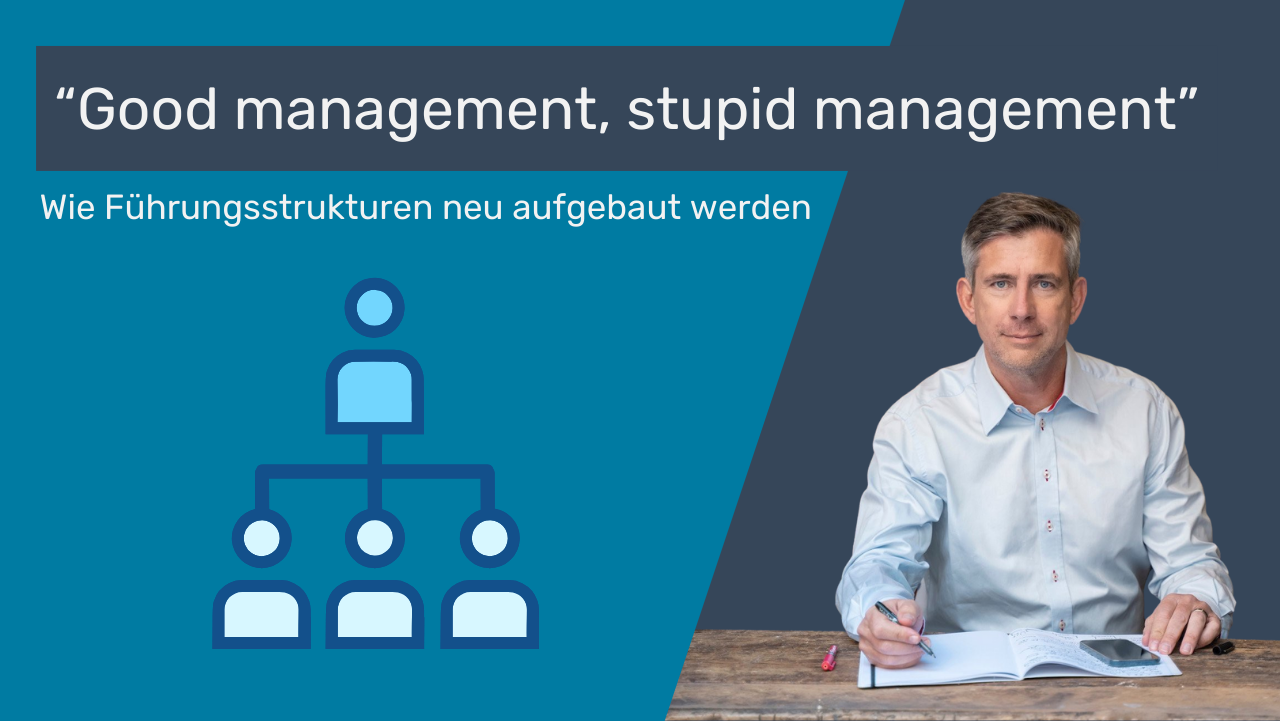How to prevent teams from failing
 Consulting Tools
Consulting Tools
Companies don't fail because of their products but because of ego clashes in the boardroom. Here's a new method for turning personalities into high-performance teams.

An era of prosperity and technical dominance is coming to an end: the German automotive industry has lost its way and is losing market share. Both manufacturers and suppliers are rethinking their business areas, are being forced to restructure and are laying off thousands of employees and temporary workers.
Why is management in the automotive industry so difficult right now?
Because the existing decision-making processes are outdated and sclerotic. A study of 1,000 respondents in Germany found that the number of decisions is increasing rapidly, while the respondents' sense of control and well-being is declining. Even digitalization is not changing this for the better. As absurd as it sounds, it's not because of the people. It's down to how they organize decisions.
This experience of what an optimal decision-making process should look like comes from practical experience. I never managed to go to business school and get an MBA. Instead, I worked as a consultant and manager for almost 3 decades. Among other things, as a strategist for Luca de Meo at SEAT. In that time, I learned what works, developed principles and collected the best tools.
A fool with a tool is still a fool.
A tool doesn't have to be modern and it doesn't have to feel good. It has to deliver the right results. To do this, it must be used correctly. This applies to every type of tool.
Two principles and seven implementation steps have proven themselves for the correct use of the tools in this article. They are the decisive context. They turn a beginner into a professional. Unfortunately, they are often forgotten. And then the tools don't work.
I have tested the following principles, tools and application steps in companies with tens of thousands of employees. And in small ones too. They have consistently led to amazing results. If they are applied with discipline and correctly.
In total, the five tools require two principles and seven steps to implement.
We reflexively associate good management with well-known names. Reitzle, Zetsche, Marchionne... They knew how to do it right. Charismatic types with the right managerial skillset.
They were just in the right place at the right time.
When you list the names, you realize: Times have changed. They would no longer be as successful today.management consultants claim that the right management style is needed. Participative. Situational. Agile. Inclusive. Sustainable. There are many labels. But even a certain management style does not guarantee success. This is because labels lead to "stupid management": people imitate "management styles" without examining the existing situation.
Stupid management blocks an objective analysis of the situation and the recognition of the underlying causes of a problem and therefore wastes resources instead of using and coordinating them sensibly. There is no success. The team is frustrated.
This could be one reason for the current situation in the automotive industry.
Silicon Valley legend Chamath Palihapitiya puts it in a nutshell:
"There is good management and there is stupid management ... Instead of looking for some labels... if things aren't working, break it down to the studs... Most people don't have the courage to go through the glass-eating that is required to get on the other side of this process."
If the management team recognizes the right issues together and works on them systematically, if it takes the company that may not be working back to its basic building blocks and principles and rebuilds it from there, then the company will work. And to success.
A good manager creates a decision-making process to bring their leadership team together, develop joint strategies and initiatives and agree on the mechanisms of interaction.
The two principles, five implementation steps and seven tools in this article help to rethink and restart current decision-making processes in the direction of "good management". "Stupid management" may also use the tools presented here, without the right principles, without logical discipline and without considering the context.
A manager cannot make a difference if the organization cannot be divided into three levels.
The first level is the operational team level: the team does the actual value creation, the actual work.
Within the company, teams deliver the products and services with which the company supplies customers, acquires new customers and partners, books sales and develops the company. Nothing progresses without them.
The teams need strong players, clear responsibilities, freedom to make decisions, sufficient resources and access to the necessary information in order to be successful.
The second level is the tactical level. It is responsible for coordination, targets, budgets, provision of resources and conflict resolution. This is where the managers sit. First and foremost, the tactical level needs an excellent understanding of the work of the operational teams.
In the Royal Navy, which ruled the world's oceans for centuries, it was compulsory for officers to have served as ratings for a number of years before being promoted. They first learned how the operational teams functioned and had to be led before they were given leadership responsibility themselves. In operational roles, future managers also acquire a good understanding of the environment, the market, the competition, the state of the art, the performance of comparable companies, etc.
Many managers at the tactical level lack this today - so-called chimney careers often follow power-political considerations and not the rules in a meritocracy. The most important task of this level is to set up decision-making structures in such a way that they continue to work stably, even if key players are replaced.
The third level, which is overlooked in many companies and therefore poorly developed or non-existent, is the strategic level for controlling management.
As the executive management level is strongly influenced by personal preferences, perceptual tendencies and power-political decisions, this level is needed to monitor and correct management decisions. This strategic or steering committee level monitors the executive management level, for example when it comes to compliance with principles, the strategic plan and agreed budgets. However, it also advises and fills gaps in skills and experience that often exist at the executive level.
A new start, a restructuring or a transformation programme begins with the CEO deciding to bring his company back to its basic principles and reorganize it.
This resets and restarts the decision-making process:
These five steps are followed by many more. However, these five steps create the initial spark for a comprehensive change in decision-making processes. And this also changes the development direction of the entire company.
The seven tools are initialized in steps 2 to 4 and filled with existing data. They serve as a basis for discussion. During the workshop in step 5, the tools are explained to the managers and discussed with them.
The aim is to achieve a common view of the following tools:
Once again, the size of the company is irrelevant with these tools. Cascading is certainly more complex and takes longer in large companies. But it works with the proposed structure.
Only the complete and correct application guarantees an effective decision-making process that aligns the direction of a company and enables "good management".
Many situations are difficult and complex for the CEO. Being in such a situation can have many causes. The decisive factor is the CEO's will to create clarity and to "reboot" the decision-making process in his company.
An unclouded view from the outside, coupled with the will to bring the company back to its basic principles, can resolve misperceptions and resistance and focus on growth and competitiveness.
Because the transition from stupid management to good management always means: "Eating glass." To come out on the other side of the process stronger, focused and ready for new growth.
 Consulting Tools
Consulting Tools
Companies don't fail because of their products but because of ego clashes in the boardroom. Here's a new method for turning personalities into high-performance teams.
 Change Tools
Change Tools
Implementing changes using a frontal approach fails, costs a lot of money and often fails. It is more skillful to make targeted use of tipping points
Tools and frameworks, expert interviews, case studies and the latest research help car managers achieve strategic clarity, greater momentum and better performance at all levels.
10 minutes of reading time every two weeks. You can unsubscribe at any time.
